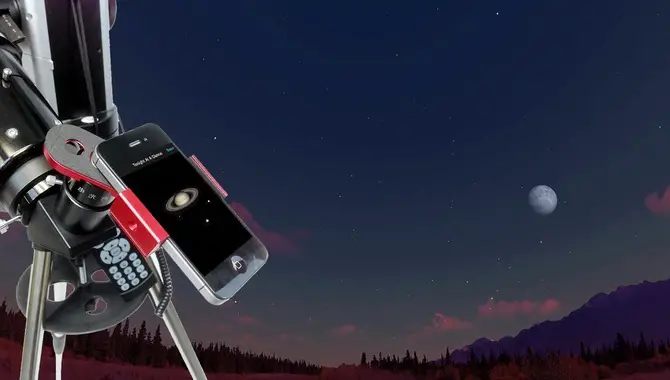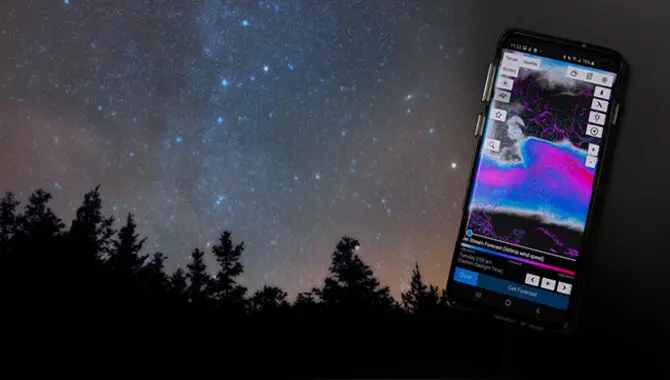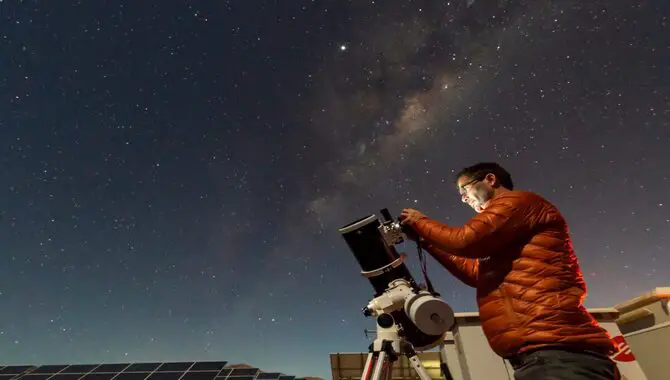In recent years, phone cameras have become increasingly sophisticated, making them a great tool for amateur astrophotography. Here are some tips on how to take great astrophotography of the solar system with your smartphone:
- Use the highest resolution setting on your phone camera. This will help to minimize pixelation and produce a sharper image.
- Use a tripod or some other form of stabilization. This will help to keep your phone still while you take the photo, resulting in a clearer image.
- Use the night mode setting on your phone if it has one. This will help reduce noise in the image and produce a better picture.
- Take multiple photos of the same subject. This will help ensure that you get at least one good photo and allow you to choose the best one after the fact.
- Edit your photos after you take them. Many great editing apps are available that can help you improve the quality of your astrophotography.
With these tips in mind, you should be able to take great astrophotography of the solar system with your smartphone.

Contents
- 1 What Type Of Smartphone Do You Need For Astrophotography Of The Solar System?
- 1.1 What Are The Best Settings To Use On Your Smartphone For Astrophotography Of The Solar System?
- 1.2 How Do You Mount Your Smartphone For Astrophotography Of The Solar System?
- 1.3 What Type Of Telescope Or Lens Do You Need To Use With Your Smartphone For Astrophotography Of The Solar System?
- 1.4 What Type Of Telescope Or Lens Do You Need To Use With Your Smartphone For Astrophotography Of The Solar System?
What Type Of Smartphone Do You Need For Astrophotography Of The Solar System?

Astrophotography of the Solar System . You don’t need an expensive DSLR camera to get started in astrophotography. All you need is a smartphone with a good camera sensor.
There are a few things to remember when choosing a smartphone for astrophotography. First, you’ll want to ensure the camera has a good sensor. This is important for capturing clear images of the night sky.
Second, you’ll want to choose a phone with a wide-angle camera lens. This will allow you to capture more of the sky in your photos. Finally, you’ll want to ensure the phone has a stable platform for mounting it on a tripod.
Here are a few of our favorite smartphones for astrophotography:
- Google Pixel 3: The Google Pixel 3 has a great camera sensor and wide-angle lens. It also has a stable platform for mounting on a tripod.
- Samsung Galaxy S9 : The Samsung Galaxy S9 also has a great camera sensor and wide-angle lens. It’s a little smaller than the Pixel 3, making it easier to carry around.
- iPhone XS: The iPhone XS has a great camera sensor and a wide-angle camera lens. It’s also very easy to use, making it a great choice for beginners.
If you’re starting astrophotography, we recommend choosing one of these smartphones. They’ll give you the best results and help you get the most out of your night sky photos.
What Are The Best Settings To Use On Your Smartphone For Astrophotography Of The Solar System?

Astrophotography refers to photography of astronomical objects, celestial events, and areas of the night sky. It is a specialized type of photography that requires specific equipment and techniques.
One of the great things about astrophotography is that you can do it with relatively simple and inexpensive equipment. In this article, we’ll discuss the best settings to use on your smartphone for astrophotography of the Solar System.
- Before we dive into the specifics, there are a few general tips that will help you get started:
- Use a tripod or other stable surface to avoid camera shake.
- Use the timer or remote shutter release to avoid shaking the camera when you press the shutter button.
- Use a lens hood to reduce glare and lens flare.
- Use a higher ISO setting to increase the camera’s sensitivity to light. However, be aware that this will also increase the image’s noise.
- Use a long exposure time to collect more light. This will result in a brighter image, but it will also increase the amount of motion blur.
- Use image processing software to remove noise and enhance details.
Now let’s take a look at the best settings to use for each type of astrophotography:
- Moon photography: You’ll want to use a long exposure time to capture the details of the lunar surface. A good exposure time to start with is 1/125 seconds. You’ll also want to use a higher ISO setting, such as 800 or 1600.
- Planet photography: You’ll want to use a shorter exposure time to avoid blurring the image due to the planet’s movement. A good exposure time to start with is 1/500 seconds. You’ll also want to use a lower ISO setting, such as 400 or 800.
- Star photography: You’ll want to use a long exposure time to capture the star trails. A good exposure time to start with is 30 seconds. You’ll also want to use a lower ISO setting, such as 400 or 800.
- Nebula photography: You’ll want to use a long exposure time to capture the details. A good exposure time to start with is 60 seconds. You’ll also want to use a higher ISO setting, such as 1600 or 3200.
- Galaxy photography: For galaxy photography, you’ll want to use a long exposure time to capture the details of the galaxy. A good exposure time to start with is 120 seconds. You’ll also want to use a higher ISO setting, such as 3200 or 6400.
Now that you know the best settings for each type of astrophotography, get out there and start shooting!
How Do You Mount Your Smartphone For Astrophotography Of The Solar System?

Space is a big place, and astrophotography is a challenging but rewarding way to capture some of its magnificence. With the right gear and planning, you can take stunning photos of the solar system that will leave your friends and family in awe. Here’s a step-by-step guide to getting you started:
- Choose your gear. You’ll need a telescope or a long telephoto lens, a camera with manual controls, and a tripod.
- Find a dark location. Astrophotography requires long exposures, so you must be away from city lights. A dark sky park or a rural area would be ideal.
- Set up your gear. Mount your camera on the tripod and point it towards the sky. If you’re using a telescope, attach your camera to the eyepiece using an adapter.
- Focus on your camera. This can be tricky, especially with a telescope. The best way to achieve a sharp focus is to use the live view mode on your camera and zoom in on a bright star. Adjust the focus until the star is as sharp as possible.
- Take a test exposure. Set your camera to manual mode and choose an exposure time of around 10 seconds. Take a few test shots and check the results on your camera’s LCD screen. If the stars are blurred, try a longer exposure. If they’re overexposed, try a shorter one.
- Find your subject. The solar system is full of fascinating objects to photograph, from the Moon to the planets. Use an astronomy app or a star chart to help you find your target.
- Frame your shot. Zoom in on your subject and position it in the center of the frame.
- Take a photo. Set your camera to manual mode and choose an exposure time based on the brightness of your subject. For the Moon, a good starting point is 1/250 second. For a planet like Jupiter, you may need the exposure of several seconds.
- Review your results. Check your photos on the LCD screen and make any necessary adjustments. With some practice, you’ll be taking amazing astrophotos in no time!
What Type Of Telescope Or Lens Do You Need To Use With Your Smartphone For Astrophotography Of The Solar System?
With the release of powerful smartphones like the iPhone 11 Pro, more and more people are interested in using their phones for astrophotography. So,
What Type Of Telescope Or Lens Do You Need To Use With Your Smartphone For Astrophotography Of The Solar System?
In general, you will need a telescope or lens with a focal length of at least 400mm. This will allow you to magnify the objects in the Solar System enough to get some good detail in your photos.
There are several ways to mount your smartphone to a telescope or lens. One popular option is to use a special adapter that attaches to the telescope’s eyepiece. This will allow you to point your phone’s camera directly at the object you’re trying to photograph.
Another option is to use a telescope mount that has a smartphone holder built into it. This can be a bit more expensive, but it will allow you to take much longer exposures without worrying about your phone moving around.
Once you have your telescope or lens set up, you’ll need to download a special app to control the camera on your phone. This will allow you to set the exposure time, ISO, and other settings for the best possible results.
One of the best things about using a smartphone for astrophotography is that you can easily share your photos with the world. So get out there and start taking some amazing photos of the Solar System!
Conclusion
With the right apps and a few simple tips, anyone can take amazing astrophotography of the Solar System with their smartphone! If you’re still unclear about how to take astrophotography of the Solar System with a smartphone, feel free to leave a comment below.
Leave a Reply